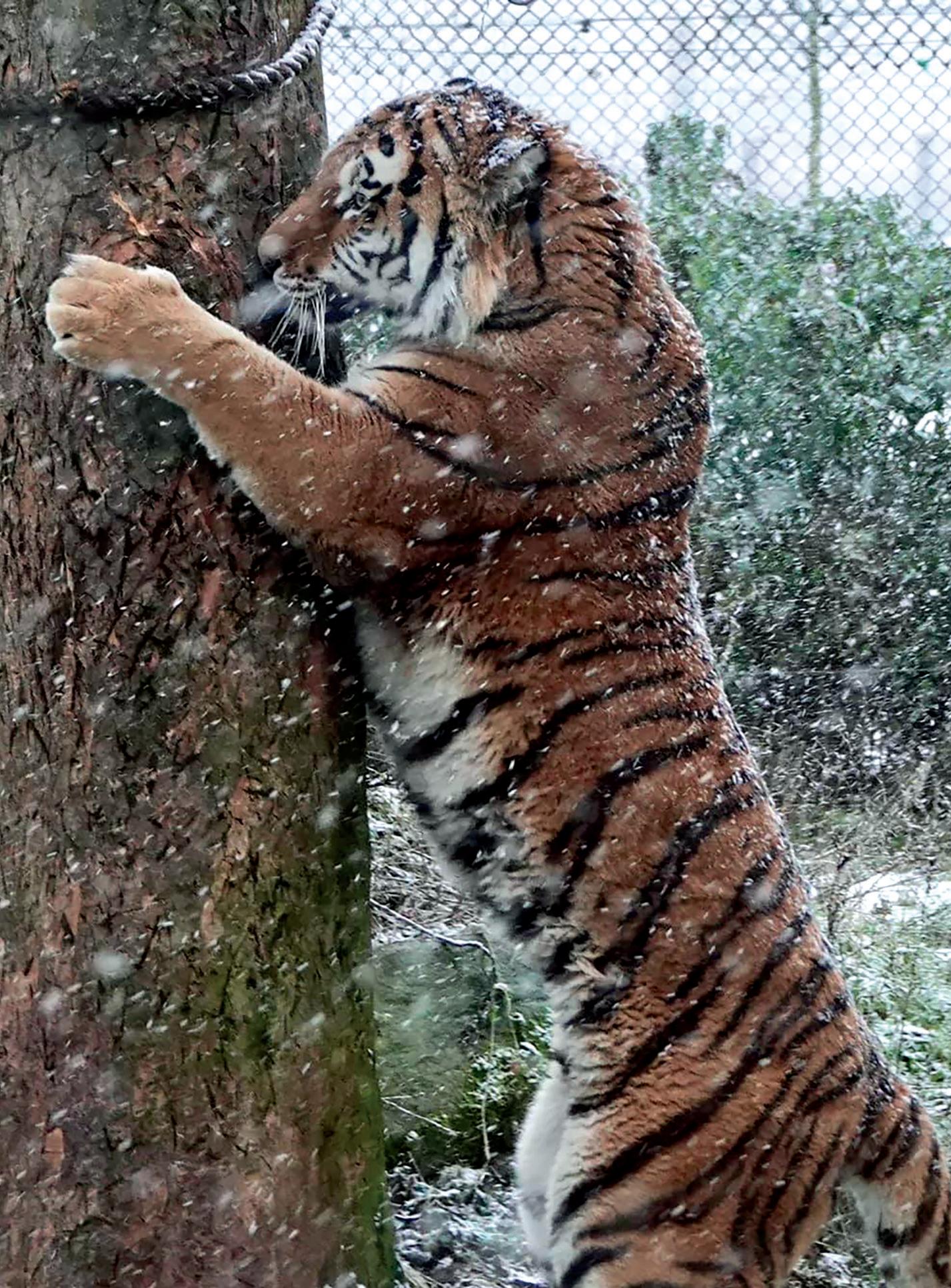
4 minute read
EXOTICS NEWS
The latest from the world of exotic pet keeping
Zoo Update Howletts Wild Animal Park
Advertisement
A male greater kudu has arrived from Dvur Kralove in the Czech Republic. Meanwhile at sister collection Port Lympne Hotel & Reserve a male European bison, bred at the collection, departed on a journey of over 1,400 miles to the Fagaras Mountains in Romania, as part of the Aspinall Foundation`s “Back to the Wild” programme to reintroduce the bison back into the region.
Knowsley Safari Park
Male Amur tiger “Miron” (born at Moscow Zoo 2014) has arrived from Copenhagen Zoo to pair with their female “Sinda” as an EEP breeding recommendation. However, the move is with some trepidation, as he did kill his mate at Copenhagen Zoo in 2018.
Rare Frogs Breed
Following the collection of the last remaining 14 Loa water frogs (Telmatobius dankoi) from a drying pool in Chile, the Zoologico Nacional de Chile successfully bred the Critically Endangered frogs in October 2020 for the first time, with 180 tadpoles hatching. Then in December 2020 a further 250 eggs were produced and these have since hatched at the National Zoo
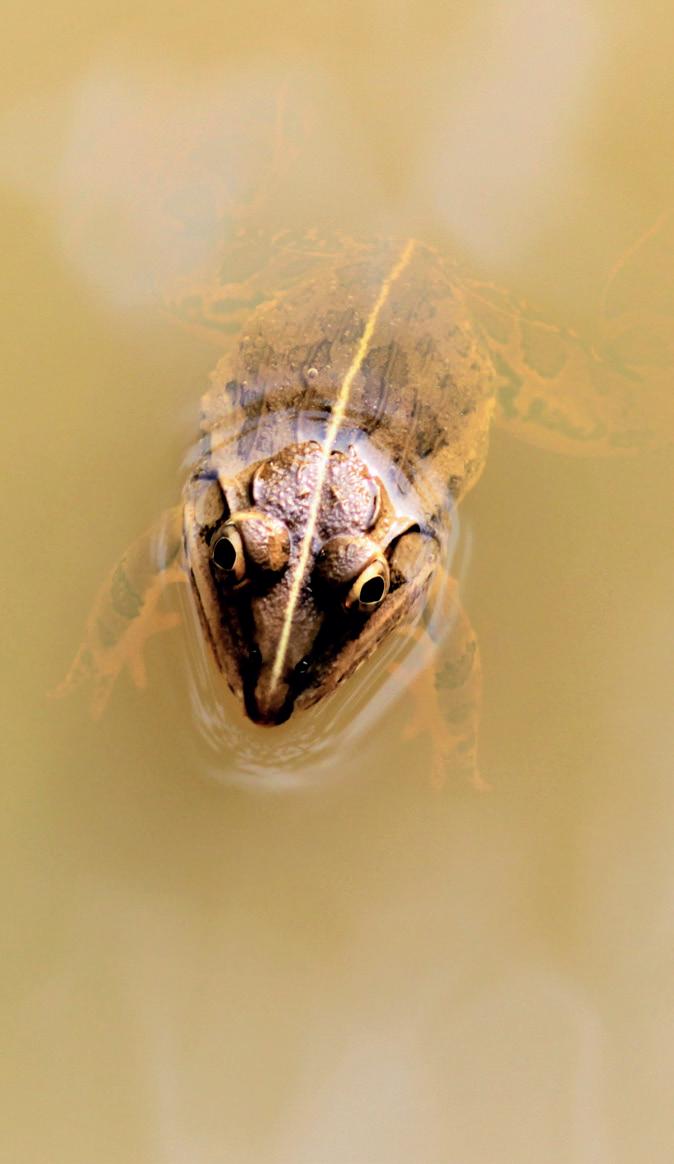
Native Amphibian Reproduction Center in Chile. The species was only discovered in 1999 and is Chile`s most endangered frog.
So it is hoped that the species will be reintroduced back into the wild at a future date when a suitable habitat is found for them.
Last Ditch Hope for Rare Rhino
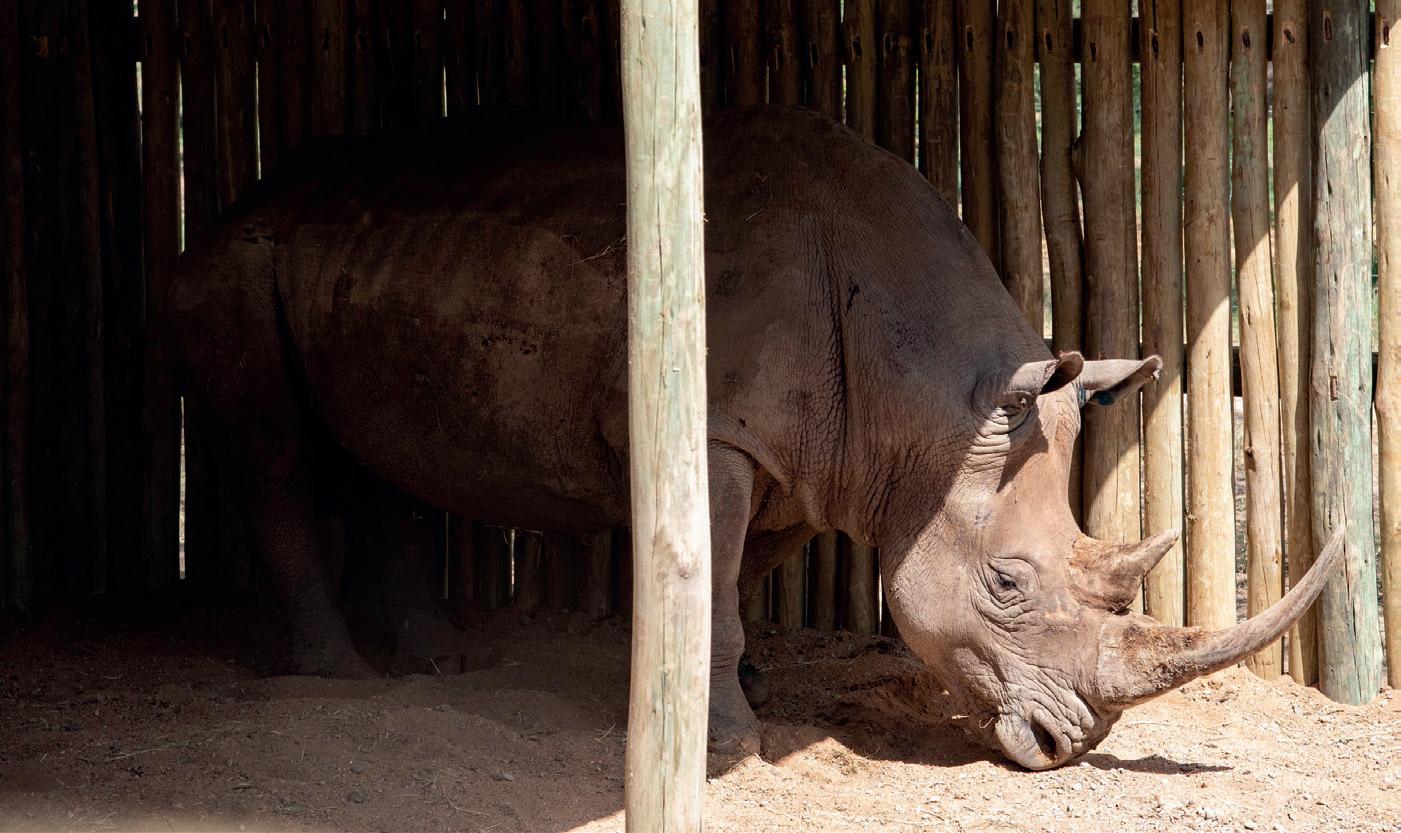
Scientists from the BioRescue Project have been working with the last two remaining female Northern white rhinos, which are located at the Ol Pejeta Conservancy in Africa, in a last ditch attempt to save the species. The aim is to transfer harvested and fertilised eggs, from the females “Najin” and her 20 year old daughter “Fatu”, and place them in surrogate Southern white rhinos by artificial insemination. Fourteen eggs were recently collected from “Fatu” using an ultrasound-guided probe, and of these eggs two were successfully fertilised using the frozen sperm (from one of the last males before they died), with the chance of developing into viable embryos. Unfortunately no healthy eggs were harvested from “Najin” probably due to her advancing age (31 years) and her poor health – she has an abdominal tumour, which may have hampered the functionality of her reproductive organs.
It is thought that the team have succeeded in creating five potentially viable embryos.
The First Captive Primates to Contract Covid-19
A group of Lowland gorillas are thought to be the first zoo-primates to have been infected with the Covid-19 virus. It is believed that they contracted the virus from an asymptomatic keeper working with them at San Diego Safari Park. The park’s executive director, Lisa Peterson, told the Associated Press that eight gorillas who live together at the park are believed to have the virus and several have been coughing. Gavin Newsom, California’s governor, confirmed that, in the group of eight gorillas, at least two gorillas had tested positive while three were symptomatic. The safari park confirmed the presence of Covid-19 through faecal samples from the gorillas. Veterinarians are closely monitoring the gorillas, they are being given vitamins, fluid and food, but no specific treatment for the virus. Aside from some congestion and coughing, the gorillas are apparently doing well. The group remain quarantined together and are eating and drinking normally.
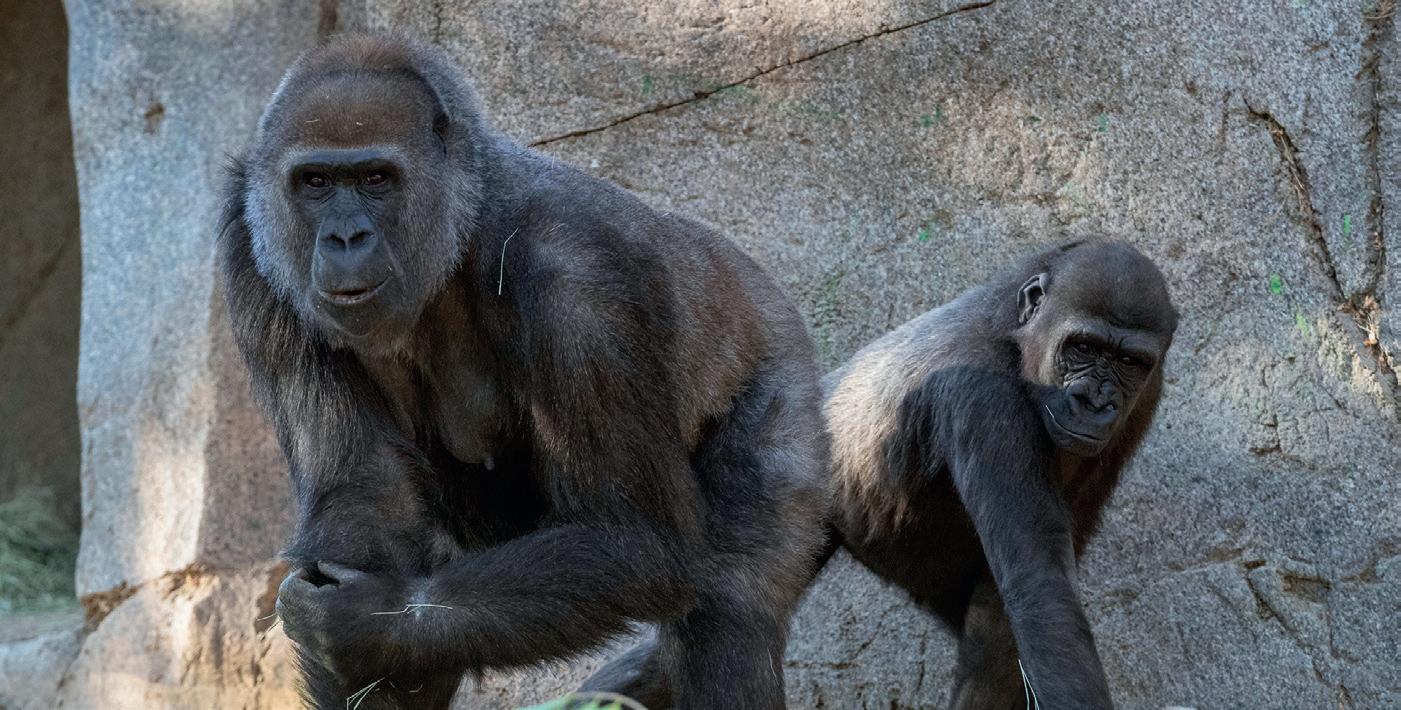
Until now the only zoo animals infected by the virus had been big cats - a four-year-old Malayan tiger named “Nadia” at the Bronx zoo in New York in April, and shortly afterwards, three other tigers and three lions at the same zoo as well. “Bashir”, an 11-year-old Malayan tiger at the Knoxville zoo in Tennessee, tested positive for coronavirus in October and went into quarantine with the Malayan tigers “Arya”, 6, and “Tanvir”, 11, who were also displaying mild coughing, lethargy and a decrease in appetite. Then “NeeCee”, a five-year-old snow leopard at the Louisville zoo in Kentucky, tested positive.
All have now recovered.
Another case of covid-19 was recorded recently in four lions at Barcelona Zoo in Spain. Two staff also had the virus. It is known that all felids can carry, or be affected, by covid-19 (the same can be said for various other species, for example large numbers of farmed mink in the Netherlands have had to be culled in recent months for the same reasons).
New Bat Species Discovered
Scientists, led by the American Museum of Natural History, were conducting field surveys of the caves and mining tunnels in the Nimba Mountains of Guinea in West Africa, when they discovered an unusual bat for the first time in 2018. They were looking for the rare Lamotte`s roundleaf bat (Hipposideros lamottei) which is only found in this area, when they noticed another bat in the same location, which was a large orange and black species.
This previously unknown species has now been officially named as Myotis nimbaensis (also known as the Orange-furred bat), and due to its restricted location, it is likely that this species will be regarded as Critically Endangered.
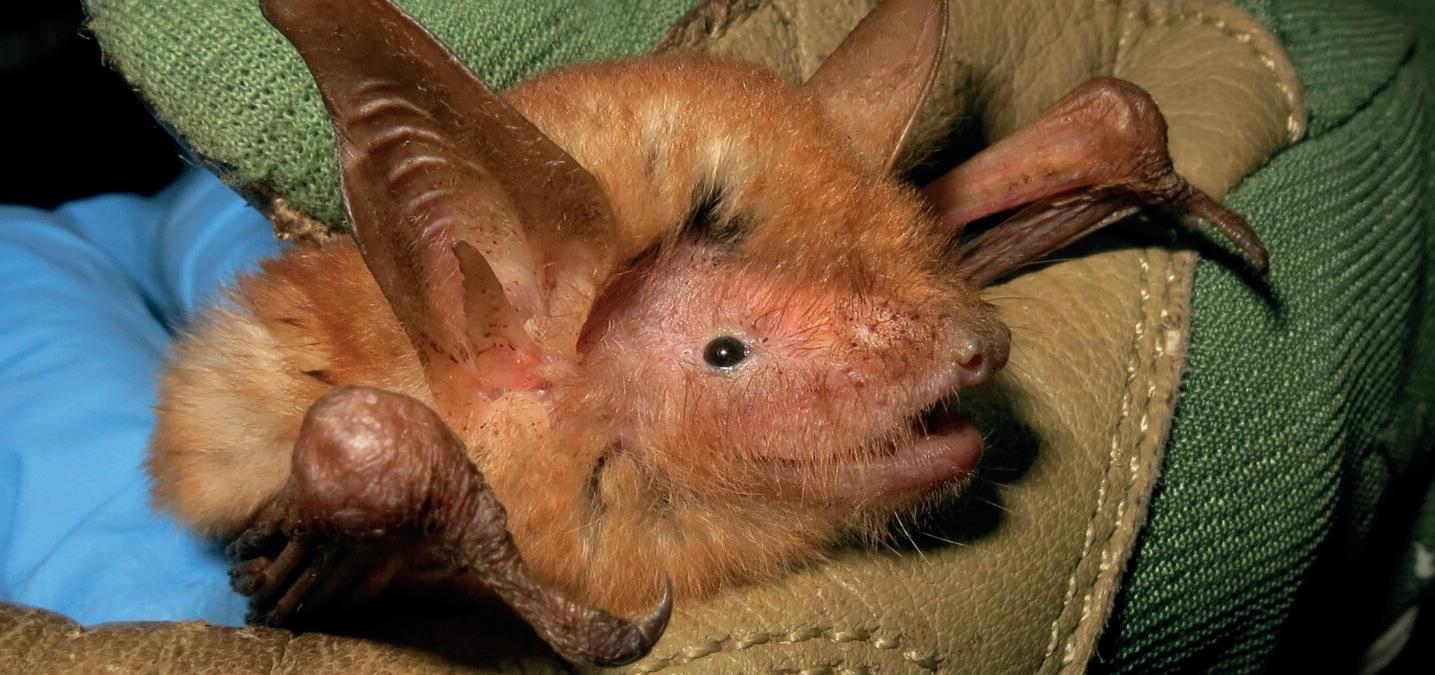
New Species of Tree Hyrax
A research team from the University of Helsinki recently spent three months studying the night-time calls of nocturnal species in the Montane Forests of Kenya and they believe they have discovered a new species of tree hyrax in the Taita Hills region that was previously unknown to science. The discovery was published in the mid-December edition of the scientific journal Discovery
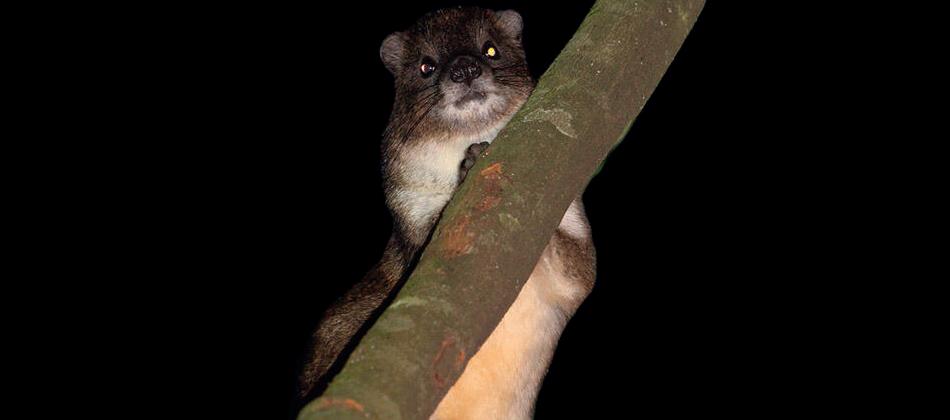
Very little is known about the diversity and ecology of tree hyraxes because these animals are mainly active at night in the tree canopies of Africa’s tropical forests. These animals are known to be able to scream with the strength of more than one hundred decibels, but the ‘strangled thwack’ calls that have been recorded in Taita’s forests have not been described anywhere else. The tree hyrax song may continue for more than twelve minutes, and it










